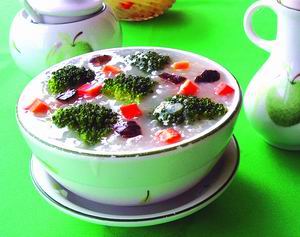more>>More News
- National Day
- ways to integrate into Chinese style life
- Should they be in the same university with me?!!
- Chinese Ping Pang Legend: the Sun Will Never Set
- A Glance of those Funny University Associations
- mahjong----The game of a brand new sexy
- Magpie Festival
- Park Shares Zongzi for Dragon Boat Festival
- Yue Fei —— Great Hero
- Mei Lanfang——Master of Peking Opera
Traditional Chinese Medicine-Ultimate Guide to Health
By admin on 2015-01-29
"Yangsheng" refers to the improvement of health and
the prolonging of life through the proper care and nurture of one's body and
mind. Dietotherapy Dietotherapy in Traditional Chinese
Medicine (TCM) is a specialty that concerns the study of how to make good use of
foods and natural nutriments as well as Chinese medicine to preserve health,
prevent and heal diseases, quicken recoveries, and slow aging. TCD is based on the fundamentals of TCM in both
theory and clinical practice, including for example, the theory of Yin-Yang,
Five-Elements, Zang-Fu organs, meridians, etiology and pathogenesis (the study
of causes and development of diseases), diagnostic methods, therapeutic
principles, and so on. It is understood in TCM that like herbs, foods also
have different natures and flavors, accounting for their actions of reinforcing
or reducing, and ascending or descending. Foods are able to balance Yin and
Yang, and Qi and blood in the body, according to TCM. To prevent and cure
diseases, both foods and medicines can have important effects since they share
the same source, are based on the same theory, and have similar medicinal
actions; hence, in TCM, food and herbs are combined in clinical use. Four Natures and Five
Flavors Ancient Chinese people believed that foods, like
herbs, could also be classified into "four natures" and "five
flavors." Four Natures The four natures include "cold," "hot," "warm," and
"cool." The foods of "cold" or "cool" properties can be used
to treat hot-natured diseases. The following are foods that are cold or cool in
nature: barley, millet, buckwheat, green bean, celery, spinach, lettuce, green
cabbage stems, turnips (white), bamboo shoots, lily bulbs, lotus roots,
eggplant, tomato, watermelon, white gourds, sponge gourds, cucumber, bitter
melons, apples, pears, oranges, bananas, rabbit meat, frog meat, duck meat, duck
eggs, crabs, sea couch (grass), freshwater snails, kelp, laver, green tea, soy
sauce, table salt, and rock candy. The "hot" or "warm" foods are used in treating the
cold-natured diseases. The foods that are hot or warm in nature include:
glutinous rice, Chinese sorghum (kind of cereal grass), pumpkins, hot pepper,
ginger, scallions, onions, leeks, mutton, dog meat, and so on. Besides the four natures, there are other foods that
are neutral in nature, like rice, wheat, corn, beans, and so on. In terms of the theory of Five Elements, it is held
in TCM that the bitter flavor is connected to the heart, sour to the liver,
sweet to the spleen, pungent to the lungs, and salty to the kidneys. Foods with a pungent flavor include: ginger,
scallion, garlic, hot pepper, pepper, cayenne pepper, onion, leek, and
spirit. Foods with a sweet flavor include: potato, lotus
root, wheat, polished rice, pea, milk, pork, chestnut, date, and
honey. Foods with a sour flavor include: tomato, tangerine,
plum, lemon, grape, papaya, haw, cherry apple, pomegranate, and
vinegar. Foods with a bitter flavor include: bitter melon,
almond, lily bulb, orange peel, tea, coffee, bitter green, arrowroot, and pig
liver. Foods with a salty flavor include: barley, millet,
dried purple seaweed, kelp, jellyfish, pork, beef, crab, and table
salt.

Five Flavors
- Contact Us
-
Tel:
0086-571-88165708
0086-571-88165512E-mail:
admission@cuecc.com
- About Us
- Who We Are What we do Why CUECC How to Apply
- Address
- Study in China TESOL in China
Hangzhou Jiaoyu Science and Technology Co.LTD.
Copyright 2003-2024, All rights reserved




 Chinese
Chinese
 English
English
 Korean
Korean
 Japanese
Japanese
 French
French
 Russian
Russian
 Vietnamese
Vietnamese
